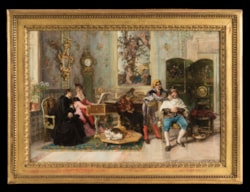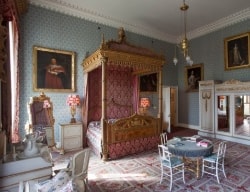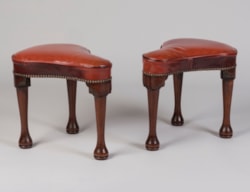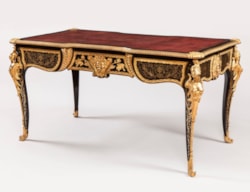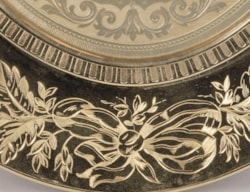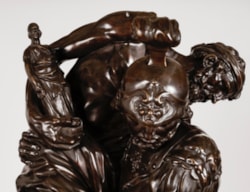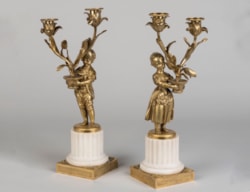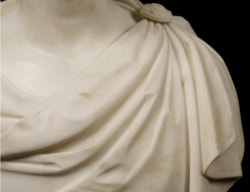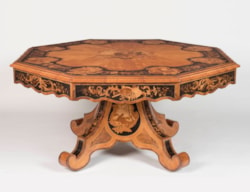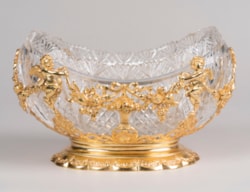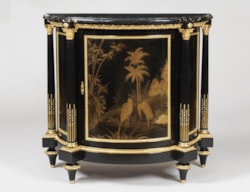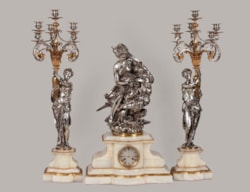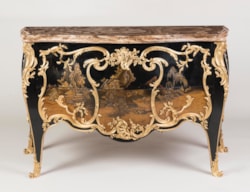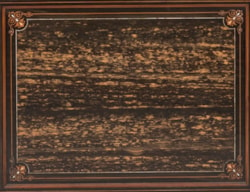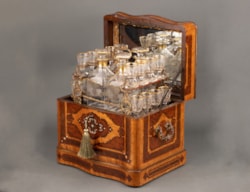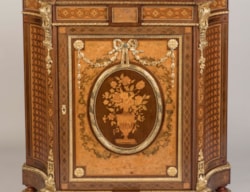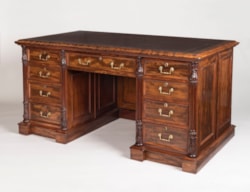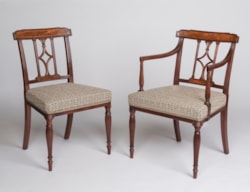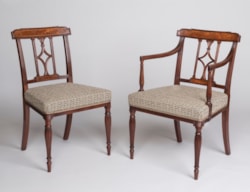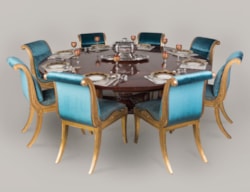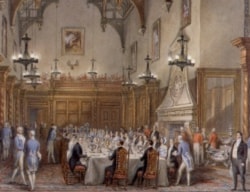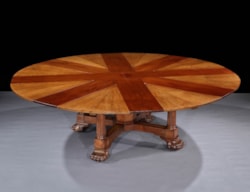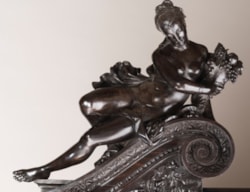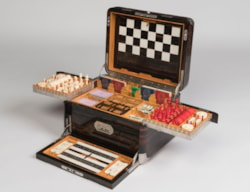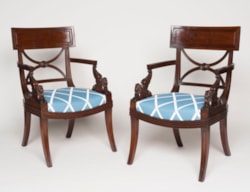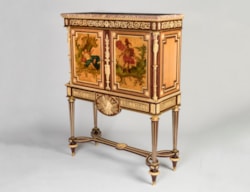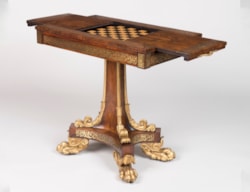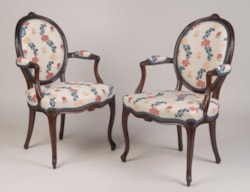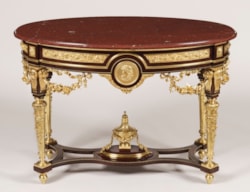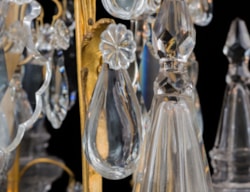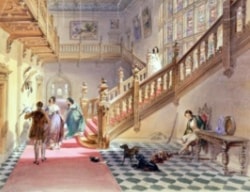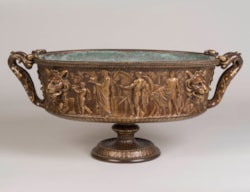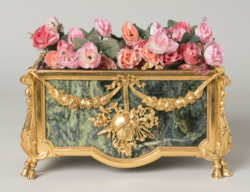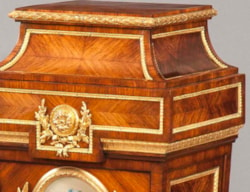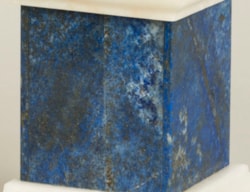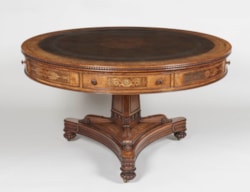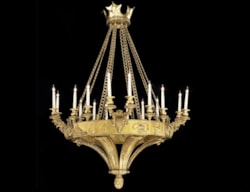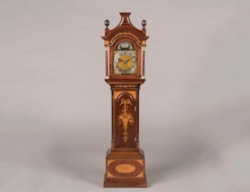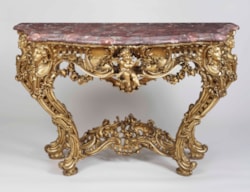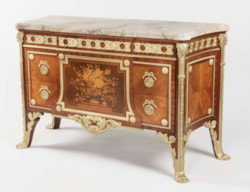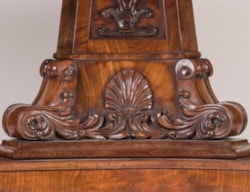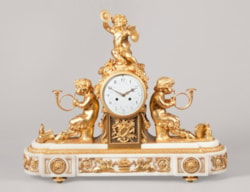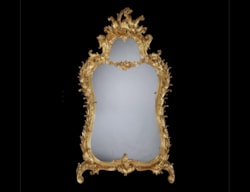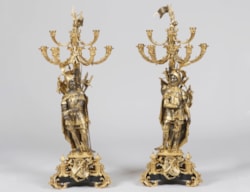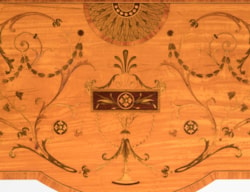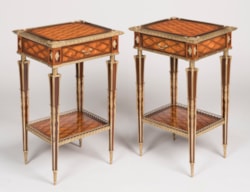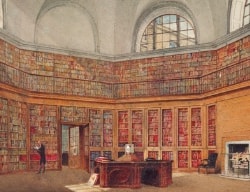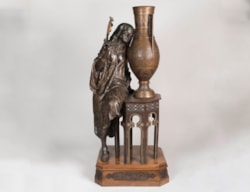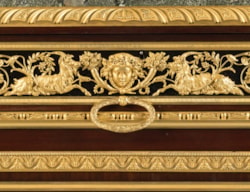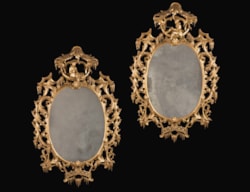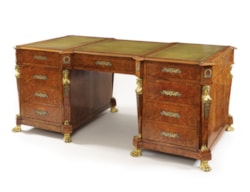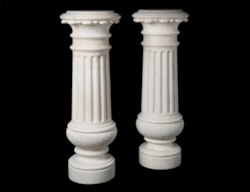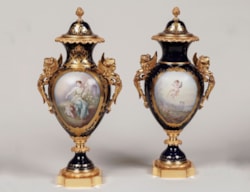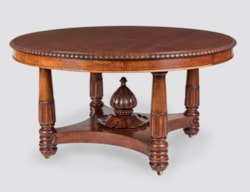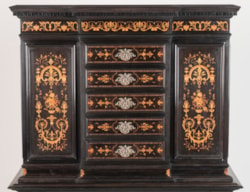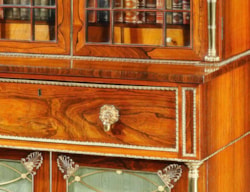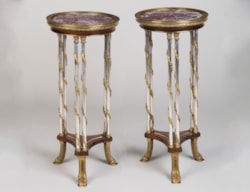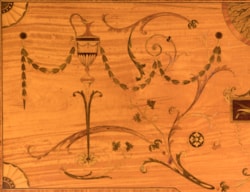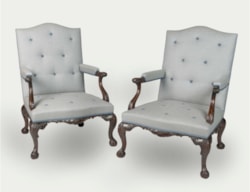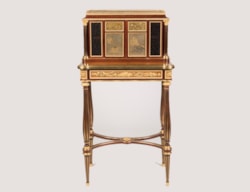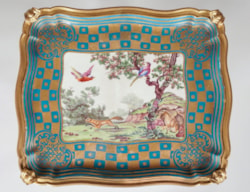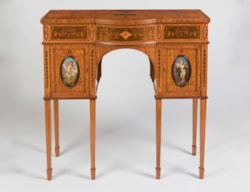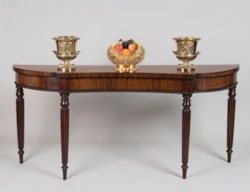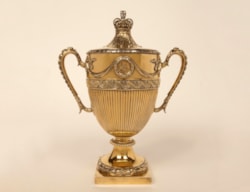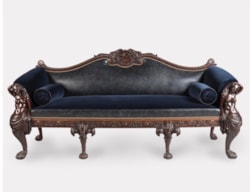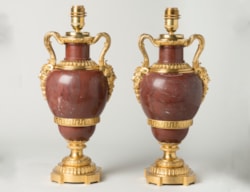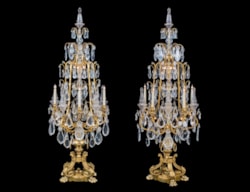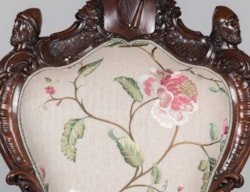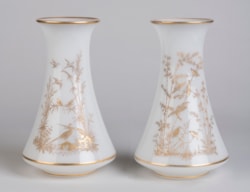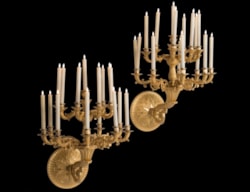November 2025
British Antique Furniture: An Expert Guide to Value

What gives British antiques their value? Discover the lineage of integrity from codified design to institutional provenance. An expert guide for collectors.
The Investor’s Guide to British Cabinetmaking: A Lineage of Integrity
For the discerning collector, the true measure of an investment-grade antique is not found merely in its aesthetic appeal, but in its capacity for endurance. While beauty is subjective, value requires a verifiable foundation. The celebrated investment integrity of British cabinetmaking, particularly within the 18th-century sphere, is not a matter of chance. It is the direct result of a unique historical lineage that established a tangible framework for authenticity and quality, transforming fine furniture into a stable verifiable asset class.
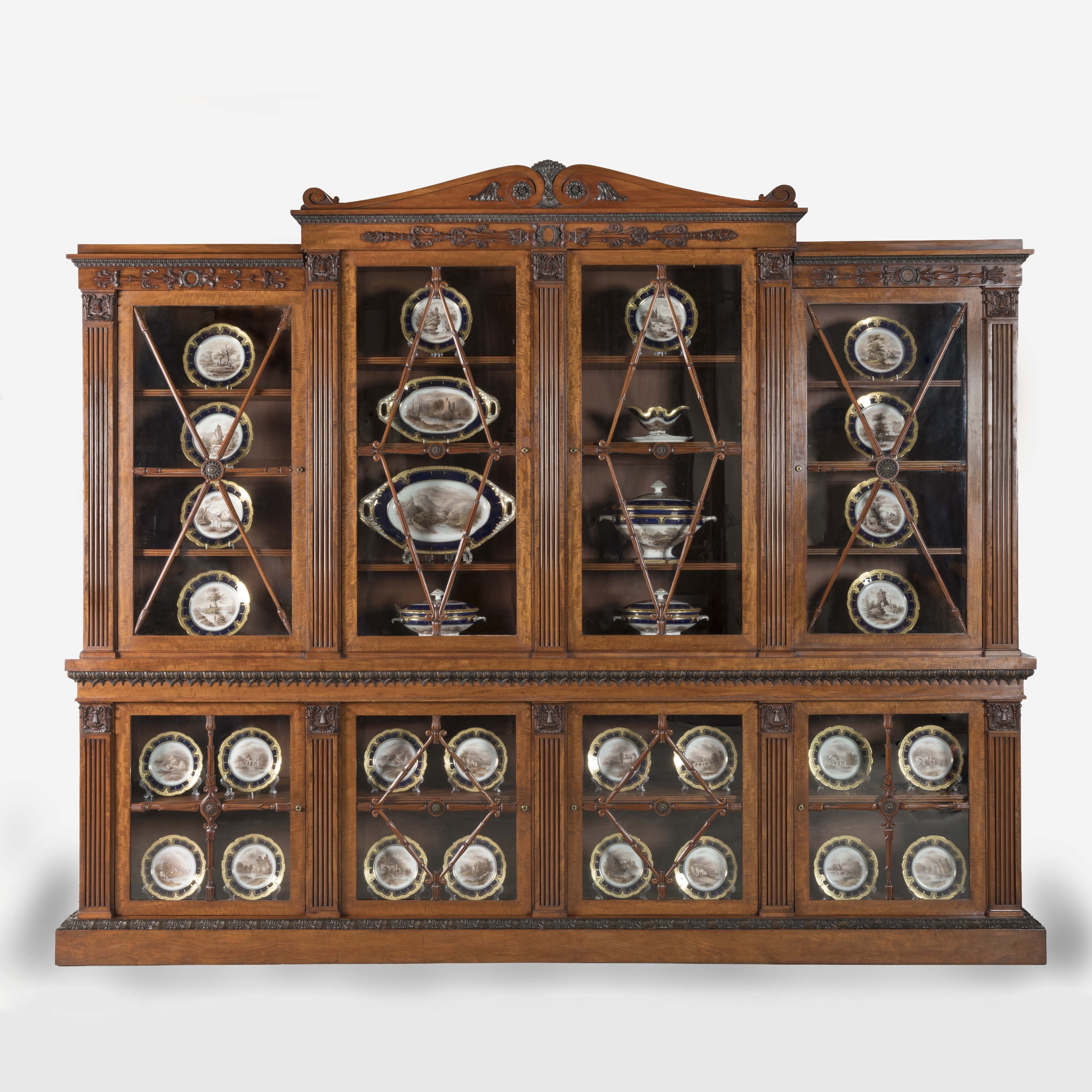
A Regency Mahogany Four Door Bookcase (ref. 10218), circa 1815, with Butchoff Antiques. Furniture Highlight at Treasure House, London, 2025.
This unparalleled lineage rests on three distinct pillars:
The Investor’s Guide to British Cabinetmaking: A Lineage of Integrity
For the discerning collector, the true measure of an investment-grade antique is not found merely in its aesthetic appeal, but in its capacity for endurance. While beauty is subjective, value requires a verifiable foundation. The celebrated investment integrity of British cabinetmaking, particularly within the 18th-century sphere, is not a matter of chance. It is the direct result of a unique historical lineage that established a tangible framework for authenticity and quality, transforming fine furniture into a stable verifiable asset class.

A Regency Mahogany Four Door Bookcase (ref. 10218), circa 1815, with Butchoff Antiques. Furniture Highlight at Treasure House, London, 2025.
This unparalleled lineage rests on three distinct pillars:
- The Codification of Style: The seminal role of published design standards that established verifiable construction and style benchmarks for the entire trade.
- Intellectual & Architectural Discipline: The imposition of rigorous aesthetic discipline, such as the archaeological Neo-Classicism of the Adam brothers, which ensured a timeless, architectural elegance.
- Institutional Accountability: A robust culture of archival record-keeping, perfected by dynastic firms like Gillow, which translates documented provenance directly into market premium and mitigates risk for the high-net-worth collector.
This combination of public-facing canons, intellectual rigor, and documented proof provides a level of financial assurance rarely found in the decorative arts market. This guide traces that golden lineage, examining the key masters and methodologies that defined British furniture as a premier, tangible asset.
The 18th-Century 'Blueprints' of Value
That golden lineage begins with the master who first codified it. The investment integrity of 18th-century Georgian furniture is inextricably linked to the work and intellectual legacy of Thomas Chippendale. His unique position in the market stems not just from his mastery as a craftsman, but from his crucial role as a publisher who standardised and disseminated the aesthetic language of luxury furniture. The 1754 publication of The Gentleman and Cabinet-Maker's Director was a pivotal moment; it was far more than a style guide, it codified an entire design canon, making it the bedrock upon which the investment stability of the period rests.

Frontispiece of Thomas Chippendale's Director of 1754 in the collection of the Metropolitan Museum of Art, New York.
This work transformed the craft by providing a "widely accessible benchmark for quality and style," encompassing the three dominant tastes of the time: the intricate Rococo, the Gothic, and the Chinese. The numerous engraved plates established a "verifiable pedigree" for new commissions. For the modern collector and Georgian furniture specialist, this published canon serves as a crucial, objective tool for authentication. It allows a piece to be measured against a definitive historical standard, defining what constitutes "pure" 18th-century English design. This benchmark is essential because, unlike later institutional houses, Thomas Chippendale rarely stamped his furniture. Therefore, provenance becomes paramount. The Director is the key to unlocking it, either through direct documentary links, like an invoice referencing a specific plate, or through technical fidelity. An unsigned piece must demonstrate the superior execution, precise carving, and high-quality timber implied by the Director's sophisticated designs to confirm its pedigree. The Director thus serves as the single most important document in the 18th-century market, providing the definitive framework required to benchmark the design pedigree and investment integrity of furniture from this era.
If Chippendale defined the technical apex of the trade, the architects Robert and James Adam established its intellectual framework. The sustained market valuation of high-end Georgian furniture owes an enormous debt to their rigorous imposition of Neo-Classical integrity. Functioning as architects and designers rather than cabinetmakers, the Adam brothers championed a "total design concept". In their vision, furniture was not an isolated object; it was an integral, subordinate part of a unified interior scheme, designed to be in perfect harmony with the wall treatments, ceiling plasterwork, and chimneypiece.
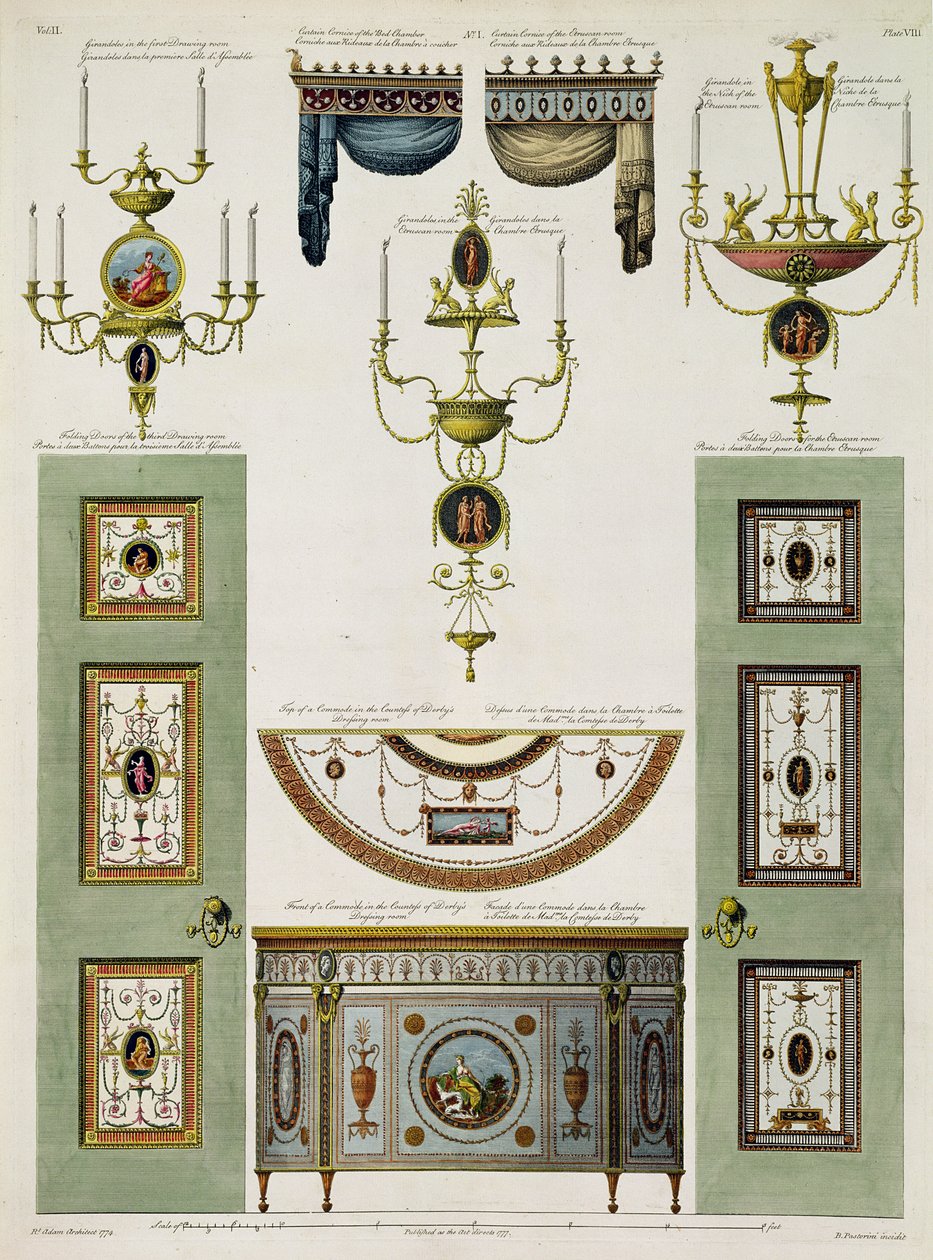
Adam Style showing the 'total design concept' championed by the brothers during the 18th century.
This unity was achieved through a scholarly "archaeological rigor", derived from their extensive studies of classical antiquity, including the ruins of Diocletian's Palace. They meticulously incorporated Roman and Greek motifs such as vases, urns, sphinxes, and patarae into their furniture designs. This architectural discipline resulted in pieces characterised by slenderness, symmetry, and delicate ornamentation, shifting the technical focus from deep carving to exquisite marquetry and contrasting veneers, such as satinwood against mahogany. This scholarly approach directly translates into enduring investment value. Because the Adam style is predicated on the timeless classical principles of harmony and balance, it possesses a profound "aesthetic longevity". It inherently "resists the cyclical devaluation that affects pieces tied to transient fashions," making an Adam-period piece a universally esteemed and timeless asset. They set the blueprint for a century of British taste, establishing the lingua franca that masters like Hepplewhite and Sheraton would later adopt.
The Institutional Guarantee: Provenance as Premium
Where the individual genius of 18th-century masters defined the blueprint for value, the 19th century perfected the model for guaranteeing it. For the risk-averse collector, this shift toward institutional accountability is the most critical factor in securing a long-term, blue-chip asset.
The firm of Gillow of Lancaster and London represents the pinnacle of this movement. Their high market valuation is predicated on one crucial factor: archival accountability. Unlike relying on subjective connoisseurship for attribution, a piece of Gillow furniture provides verifiable provenance through one of the most extensive commercial archives in history. The meticulous maintenance of job books, estimate sketches, and client ledgers that spanned generations, offers modern collectors an unparalleled ability to trace a piece's history, original cost, and specifications with remarkable precision. This documentation is the ultimate guarantee of investment integrity. It "translates historical paper trails directly into financial assurance," mitigating the primary risk of high-value antique acquisition: unproven authenticity. The presence of a "Gillow" stamp, often with a job number, acts as an explicit warranty of superior materials and construction, transforming the item from a mere attribution into a verified, dated, and provenanced object with a tangible market premium.
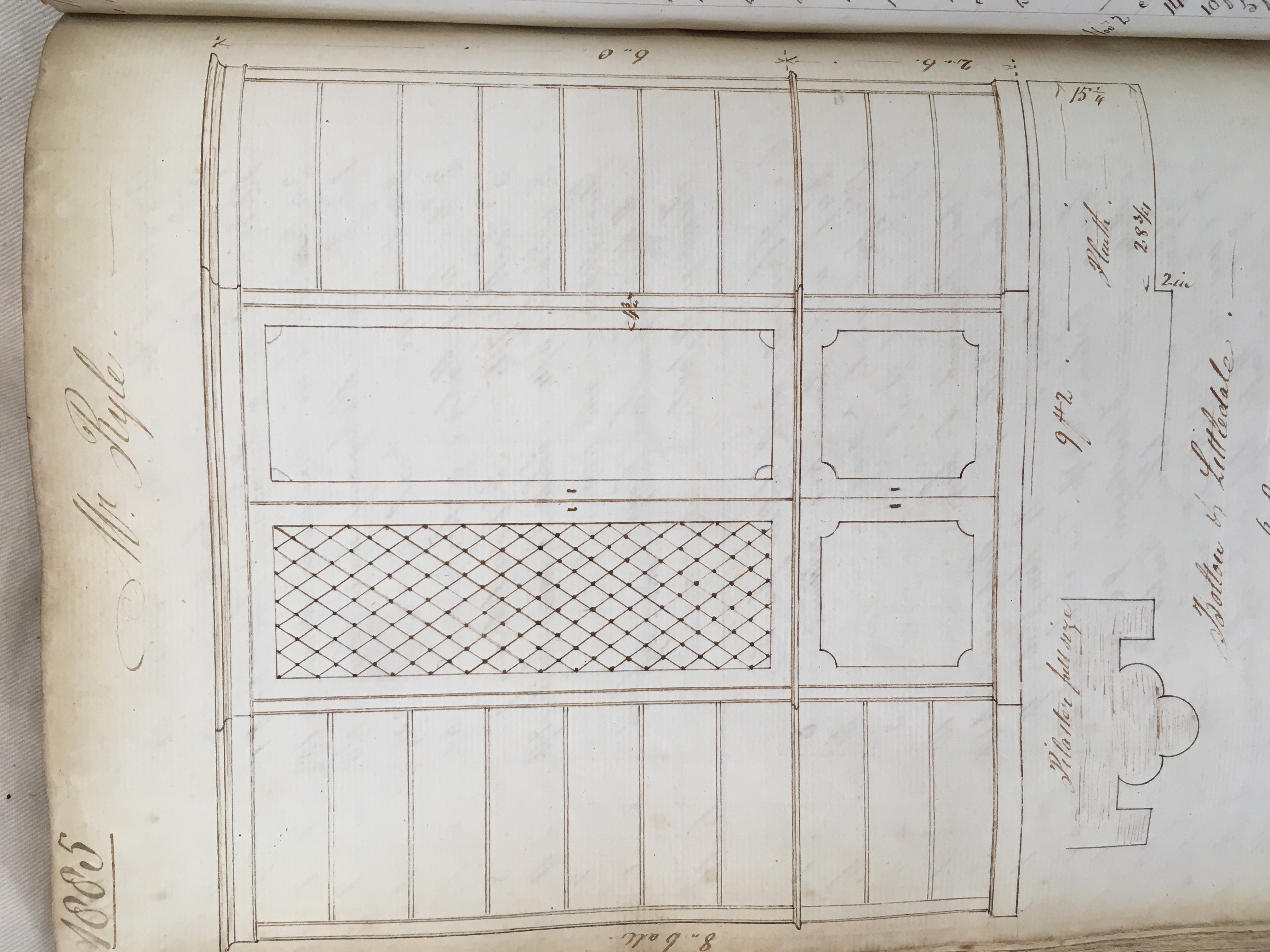
Design for a bookcase in the Gillow Archives, dated 1810. Photograph author's own.
This rigorous model of quality control and documentation was not an isolated practice; it became a national standard adopted by the great institutional houses of the Victorian era. As the 19th century ushered in the need for "mass-customisation," firms such as Holland & Sons and Hampton & Sons successfully navigated the integration of industrial scale without sacrificing prestige. Their primary strength lay in the comprehensive capacity to undertake vast, complex interior schemes for the aristocracy, institutional buildings, and the Royal Family. Managing these large-scale commissions required "strict internal quality control measures" to maintain consistency, a process that provides a valuable layer of "investment assurance" to the modern collector. Like Gillow, these firms maintained "detailed archives of commissions," providing a verifiable paper trail that reduces ambiguity and supports an asset's valuation.
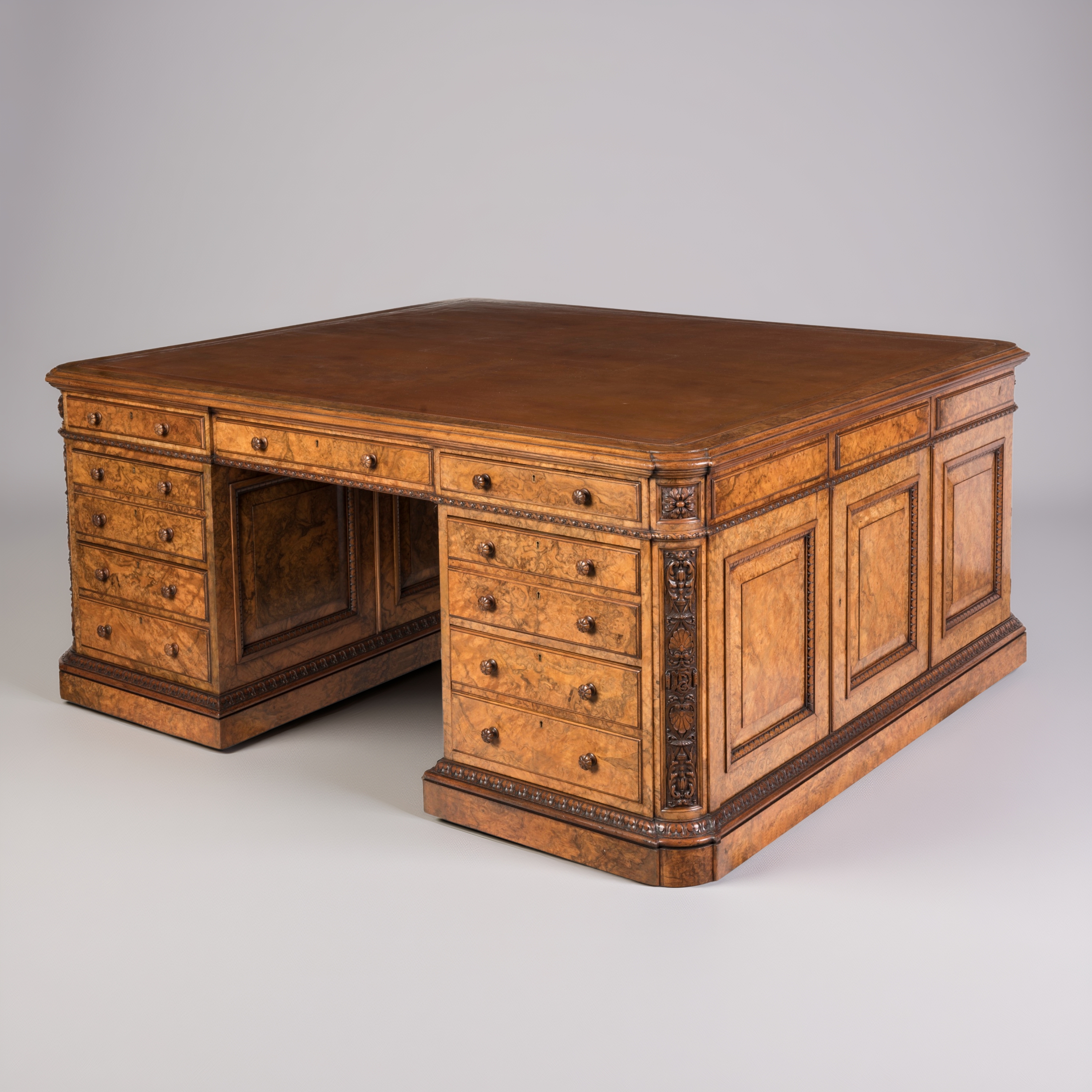
A Substantial Walnut Partners' Desk by Holland & Sons, circa 1865, with Butchoff Antiques (ref. 10145).
This commitment to accountability extended far beyond the capital. Significant regional firms, such as Lamb of Manchester, demonstrated that this institutional integrity was a national characteristic. Adhering to the same rigorous standards, Lamb of Manchester rivaled its London counterparts, securing major commissions to furnish the homes and civic buildings of the new industrial elite. These pieces are often tied to significant "local provenance" and bear the firm's stamps or labels, providing "unambiguous evidence of origin". The success of these Victorian furniture dealers, both metropolitan and regional, proves that the British blue-chip model is defined by a consistent, national capacity to deliver verifiable quality and documented history, offering the collector a uniquely stable and reliable asset class.
Hallmarks of Authenticity: What Collectors Must Look For
A piece's pedigree is written in its material and construction. For the serious collector, understanding these physical "hallmarks" is the most reliable method of antique authentication, providing tangible proof of quality that transcends stylistic opinion.
The high investment value of British furniture is fundamentally rooted in a "Material Purity Thesis". This methodology prioritised structural integrity and superior primary materials over the Continental, particularly French, emphasis on elaborate surface decoration. British cabinetmakers of the Golden Age deliberately selected timbers that offered stability, density, and aesthetic depth, ensuring the primary value lay in the substance of the wood itself.
Mahogany was the definitive timber of the Georgian and Regency periods. Its exceptional density, resistance to warping, and deep, rich figure made it the ideal medium for both sculptural carving and enduring construction. The presence of high-quality, old-growth mahogany is a primary marker of high-value work. In the late 18th century, satinwood emerged as the preferred veneer for its pale, shimmering surface, ideal for the delicate inlay favored by masters like Adam and Sheraton.
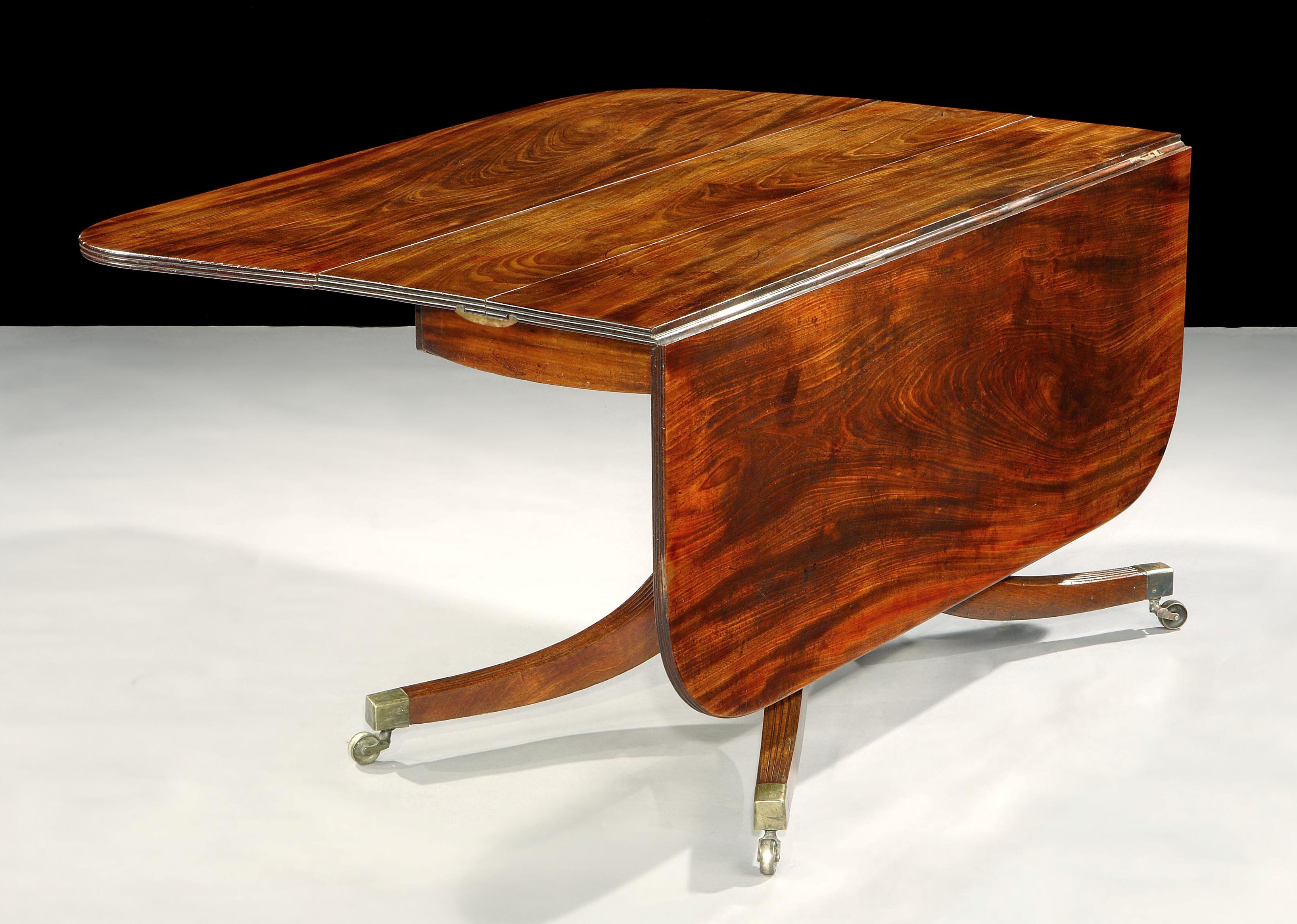
Regency Period Mahogany Dining Table by William Pocock of Covent Garden, circa 1810, previously with Butchoff Antiques.
This focus on superior timber was matched by a commitment to refined British joinery. While French ébénisterie often concealed a simpler carcass beneath complex veneers and gilt-bronze ormolu mounts, the British tradition celebrated unseen structural excellence. Precision joinery, such as meticulous dovetailing in drawer construction or robust mortise and tenon joints, served as the primary technical signature. For a connoisseur, examining the tightness and accuracy of these joints is often a more reliable indicator of 18th-century English craftsmanship than the surface decoration alone. This methodology ensured the investment value rested on the enduring quality of its structure, guaranteeing a longevity that a piece valued primarily for its delicate surface mounts could not.
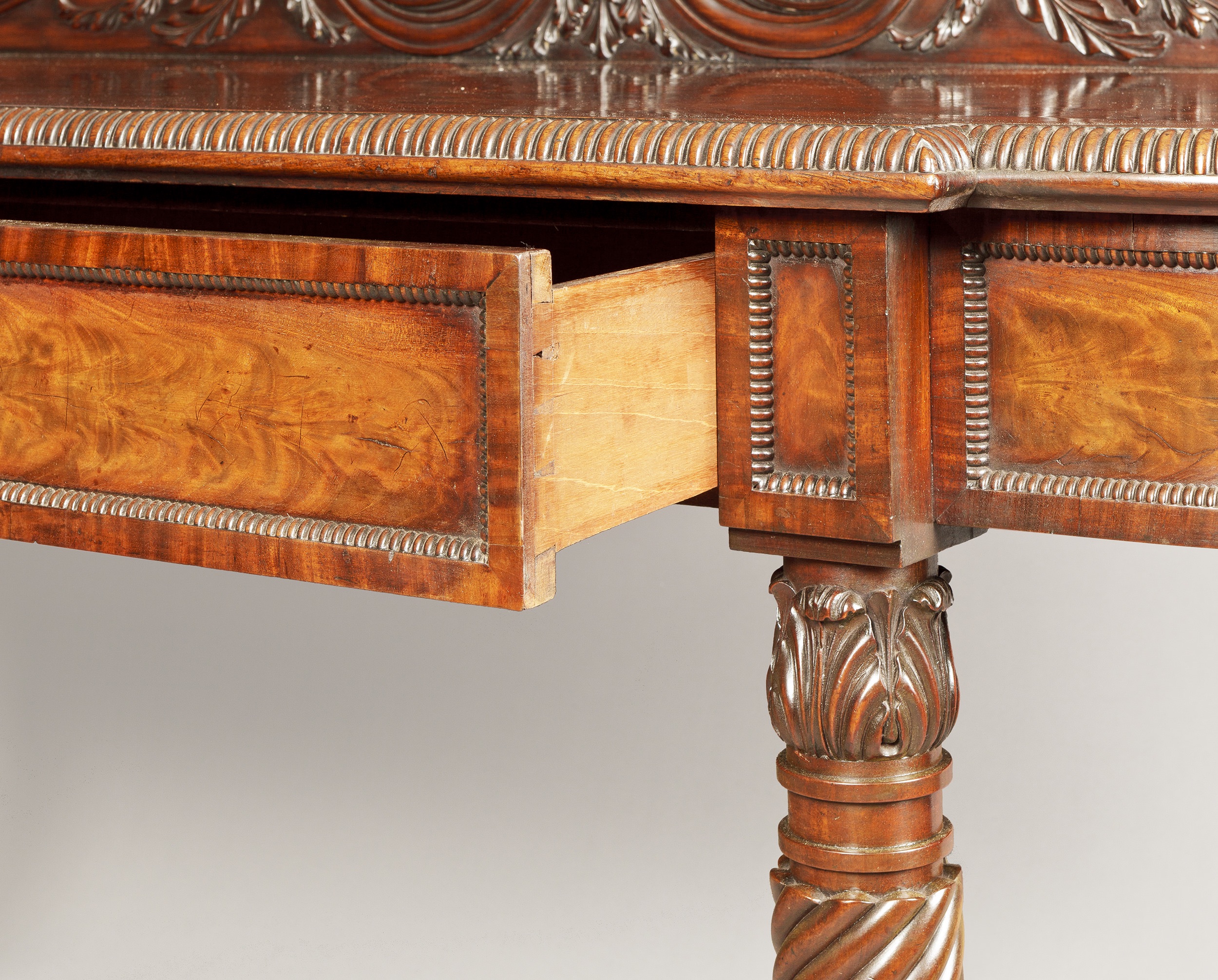
Detail of Georgian Serving Table, circa 1820, with Butchoff Antiques (ref. 7819), showing dovetail construction of the drawer.
This principle of verifiable, technical quality is perfectly illustrated by the specialist firm Howard & Sons. While other firms focused on cabinetry, Howard & Sons carved out a niche focused on the pinnacle of domestic comfort: functional excellence and bespoke upholstery connoisseurship. For collectors today, their work is valued for its unique and systematic use of verifiable markings that provide a "technical guarantee of provenance".
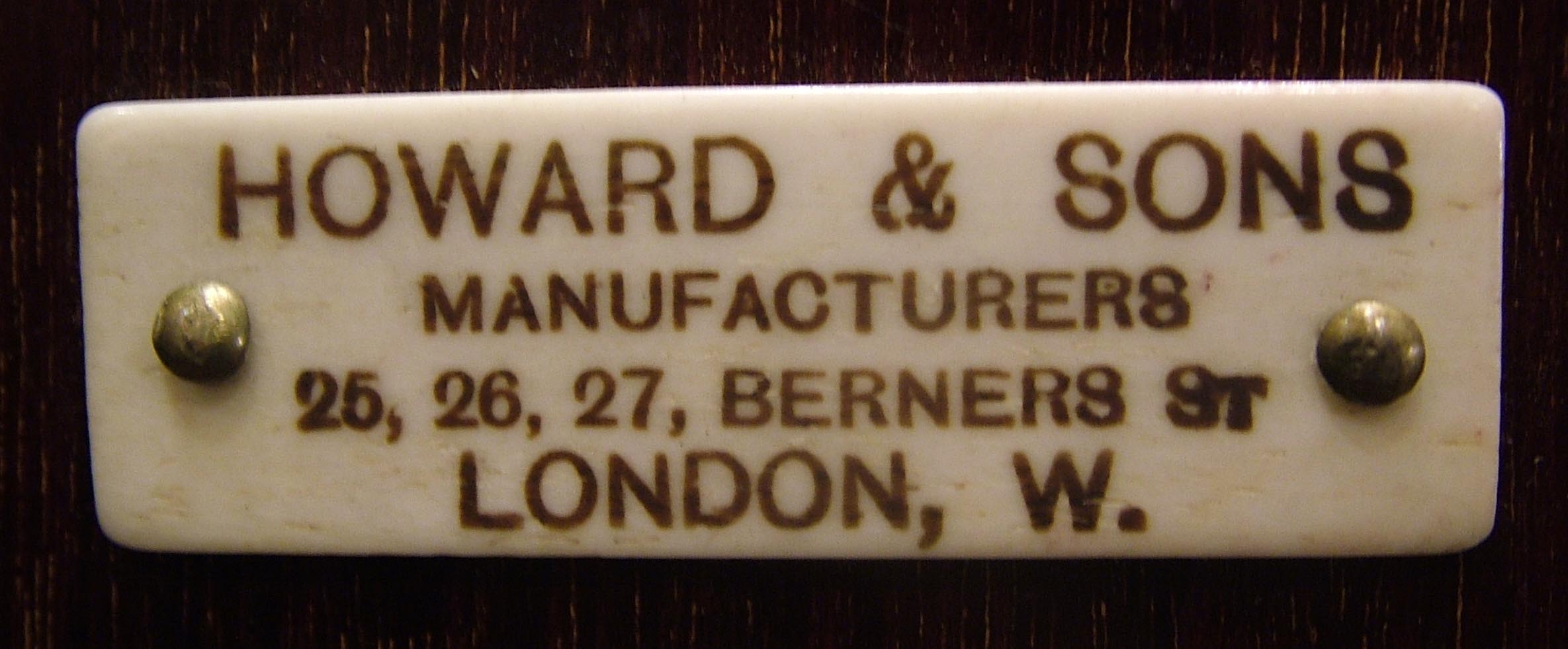
Label used by Howard & Sons. Photograph author's own.
Unlike much antique seating, which relies on stylistic attribution, Howard & Sons pieces can be definitively identified. The firm implemented a meticulous system of numbering and stamping its frames. Pieces often bear specific frame markings, serial numbers, and even date codes. This practice is crucial for authentication, as the stamps and numbers can be cross-referenced with surviving records, providing a level of certainty rarely available for upholstered furniture. The firm is particularly noted for its distinctive brass castors, which often carry the "HOWARD & SONS LONDON" stamp. The quality and wear on these original castors are a primary point of inspection for authenticators. This rigorous system of physical antique stamps and serials effectively reduces the subjectivity of valuation, transforming a Howard & Sons chair or sofa into a transparent, secure asset with verifiable authenticity.
This unbroken thread of intellectual and technical rigor connects the entire Golden Age of British design. The "investment purity" of the Regency design period, for instance, stems directly from its steadfast adherence to the classical standards established by earlier architectural masters.
The lineage begins with William Kent in the early 18th century. As a central figure in the English Palladian movement, Kent established the "architectural imperative" in furniture design. His pieces, which were often monumental, sculptural, and densely carved, were conceived as intrinsic components of the grand Palladian interiors he designed. This work established the foundational principle of British furniture as a serious, architecturally-derived collectible.
This tradition was later perfected by the intellectual apex of the Regency style, Thomas Hope. At the turn of the 19th century, Hope’s "scholarly rigor" provided the necessary discipline to maintain the integrity of British Neo-Classicism. His seminal 1807 work, Household Furniture and Interior Decoration, codified an academic approach based on meticulous studies of Greek, Roman, and Egyptian antiquity. This resulted in a refined form of Neo-Classicism, often termed Greek Revival or Egyptian Revival. Hope’s fusion of scholarly accuracy with grand, clean lines, seen in forms like the klismos chair or the use of lion monopodia, anchored the valuation of these pieces in the "enduring quality of educated taste". From Kent’s Palladianism to Hope’s antiquarianism, this continuous thread of architectural discipline ensured that British furniture remained rooted in timeless classical principles, a critical factor for capital preservation.
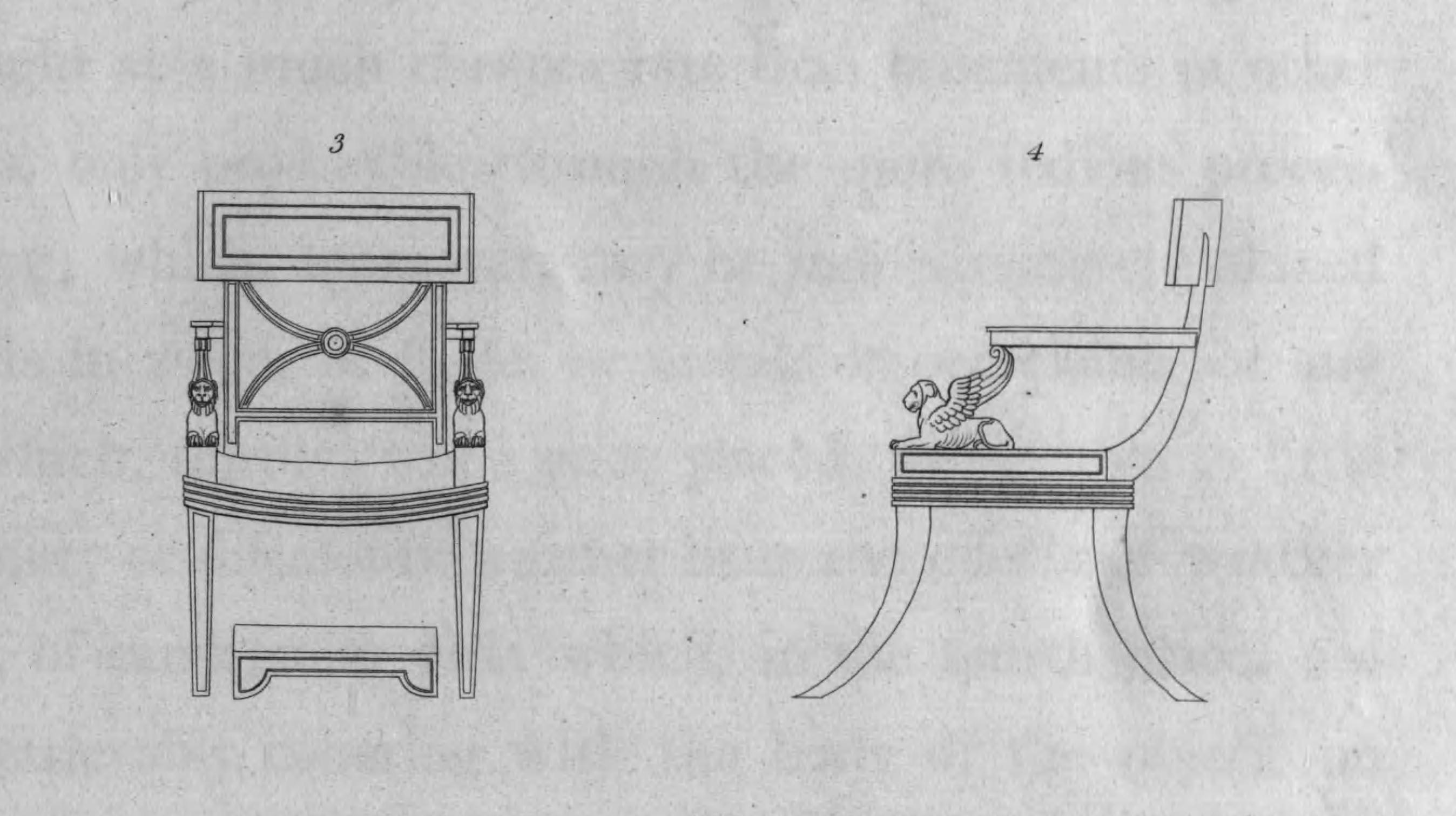
Design for a Klismos type armchair by Thomas Hope, published in 1807.
The "blue-chip" status of British cabinetmaking is, therefore, not a historical accident. It is the direct result of a traceable lineage: the published standards that created a verifiable design canon; the rigorous architectural discipline that imposed a scholarly, classical integrity to ensure timeless aesthetic appeal; the institutional accountability of firms like Gillow, whose meticulous archives provide verifiable proof that mitigates risk for the collector; and a foundational commitment to material integrity, prioritising superior timbers and structural joinery over simple surface decoration.
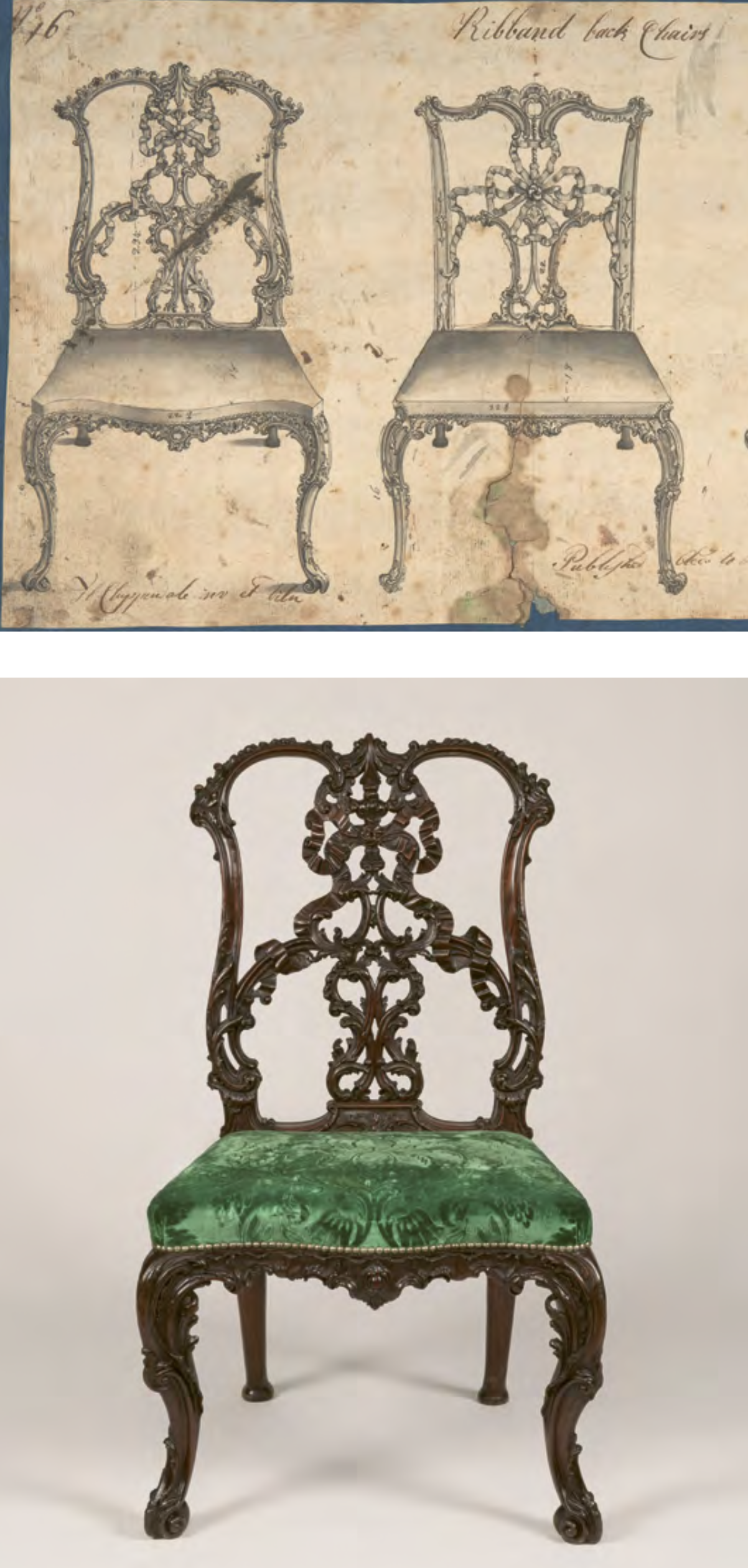
This unwavering commitment to integrity and provenance is the guiding principle of the Butchoff Antiques collection. Our passion is rooted in the "perennial pursuit to buy & sell outstanding items" that exemplify this history. We invite you to explore our curated antiques, each one expertly acquired with the deep connoisseurship this distinguished lineage demands. When you purchase from Butchoff, "you can do so with confidence", securing a verifiable asset of enduring quality, character, and style.
Writen by Rainier Schraepen

 Vip access
Vip access

 Favourites
Favourites










